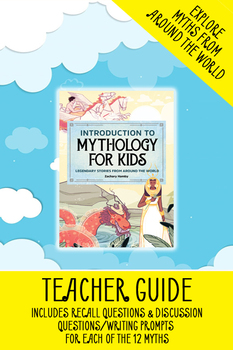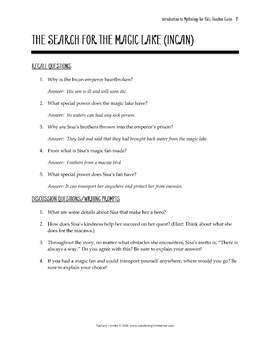Introduction to Mythology for Kids by Zachary Hamby: Teacher Guide
- PDF
Description
This 13-page teacher guide provides recall questions and discussion questions/writing prompts for each of the 12 world myths found in Introduction to Mythology for Kids by Zachary Hamby.
Introduction to Mythology for Kids (Rockridge Press) is perfect for grades 2-3 and presents a sampling of myths from around the world--including cultures like Chinese, Japanese, Incan, the Abenaki tribe of North America, Russian, Celtic, Mesopotamian, Polynesian, Norse, Egyptian, West African, and, of course, Ancient Greek. It also contains beautiful, full-color illustrations!
Myths included in the book:
- Anansi Wins the Sky-God's Stories (West African)
- Phaethon and the Chariot of the Sun (Greek)
- Maui Slows the Sun (Maori)
- Momotaro the Peach Boy (Japanese)
- Gilgamesh and Enkidu (Babylonian)
- Vasilia the Wise (Russian)
- Finn MacCool Faces a Giant (Celtic)
- Thor and Loki in the Land of the Giants (Norse)
- The Dragon's Pearl (Chinese)
- The Search for the Magic Lake (Incan)
- Isis and Osiris (Egyptian)
- Gluscabi and the Wind Eagle (Abenaki Tribes of the US and Canada)
Introduction to Mythology for Kids is sold online and in stores upon request. Free Excerpts! To read free excerpts from the book, follow this link: https://bit.ly/Free_Excerpts




